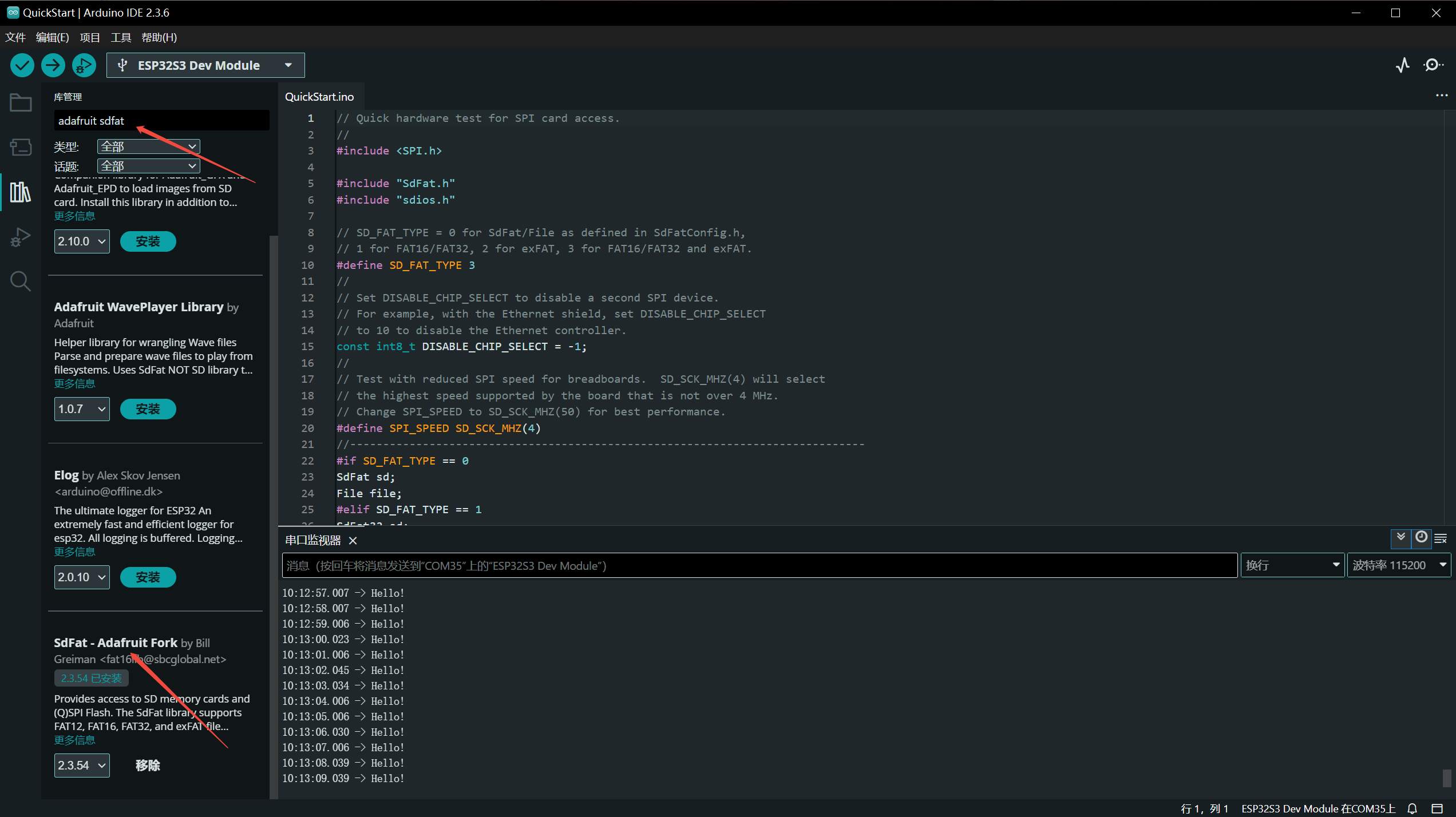ESP32 S3 UNO Arduino SD Card示例
2025年8月20日大约 1 分钟
库安装
使用Arduino内置的Micro SD卡槽需要安装Adafruit分支的SdFat库。
在库管理中搜索Adafruit SdFat并安装SDFat - Adafruit Fork库,如下图所示:
示例代码
#include <SPI.h>
//#include <SD.h>
#include "SdFat.h"
SdFat SD;
#define SD_FAT_TYPE 3
// default CS pin is SS
#define SD_CS_PIN SS
File myFile;
void setup() {
// Open serial communications and wait for port to open:
Serial.begin(115200);
while (!Serial) {
; // wait for serial port to connect. Needed for native USB port only
}
Serial.print("Initializing SD card...");
if (!SD.begin(SD_CS_PIN)) {
Serial.println("initialization failed!");
return;
}
Serial.println("initialization done.");
// open the file. note that only one file can be open at a time,
// so you have to close this one before opening another.
myFile = SD.open("test.txt", FILE_WRITE);
// if the file opened okay, write to it:
if (myFile) {
Serial.print("Writing to test.txt...");
myFile.println("testing 1, 2, 3.");
myFile.println("hello sd card!");
// close the file:
myFile.close();
Serial.println("done.");
} else {
// if the file didn't open, print an error:
Serial.println("error opening test.txt");
}
// re-open the file for reading:
myFile = SD.open("test.txt");
if (myFile) {
Serial.println("test.txt:");
// read from the file until there's nothing else in it:
while (myFile.available()) {
Serial.write(myFile.read());
}
// close the file:
myFile.close();
} else {
// if the file didn't open, print an error:
Serial.println("error opening test.txt");
}
}
void loop() {
// nothing happens after setup
}将代码上传至开发板后,以115200波特率打开串行监视器(工具->串行监视器)。系统将在SD卡上创建并写入测试文本文件,随后读取该文件内容并打印至串行监视器。